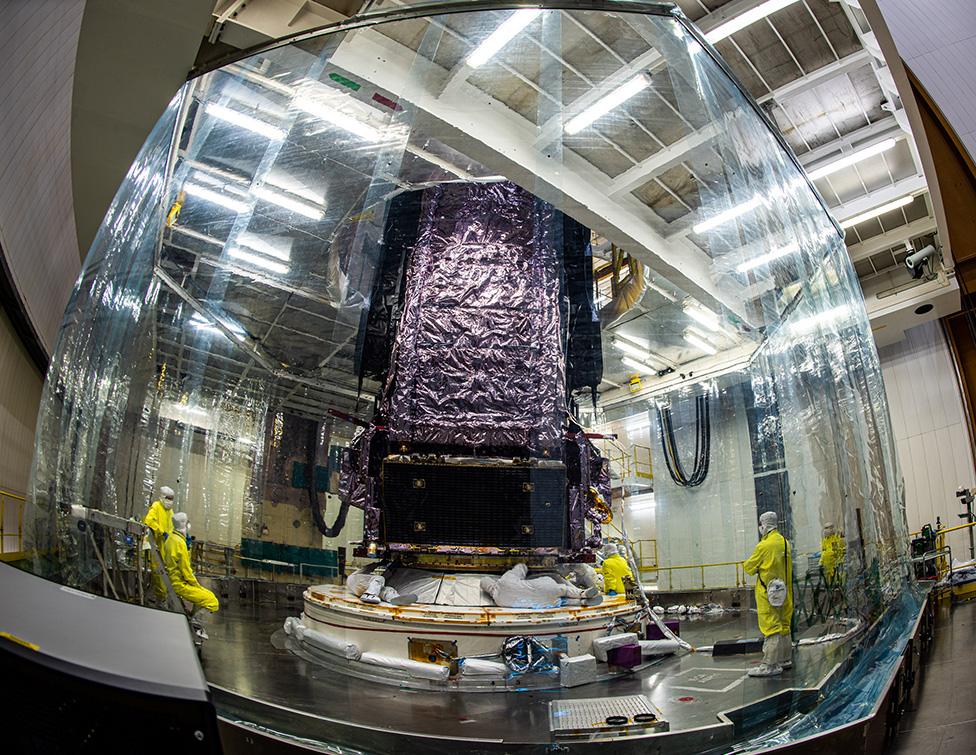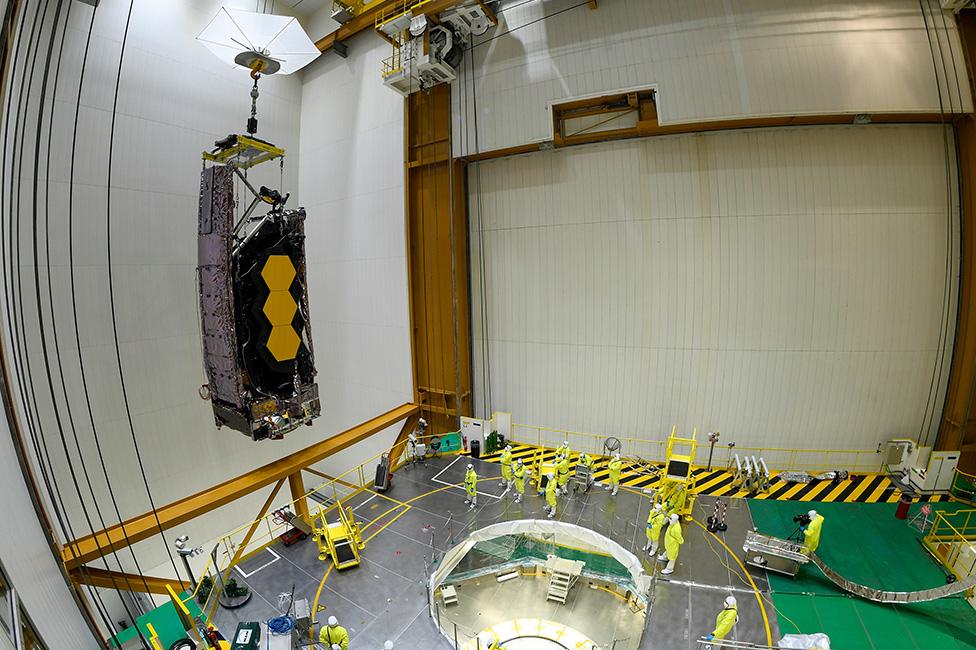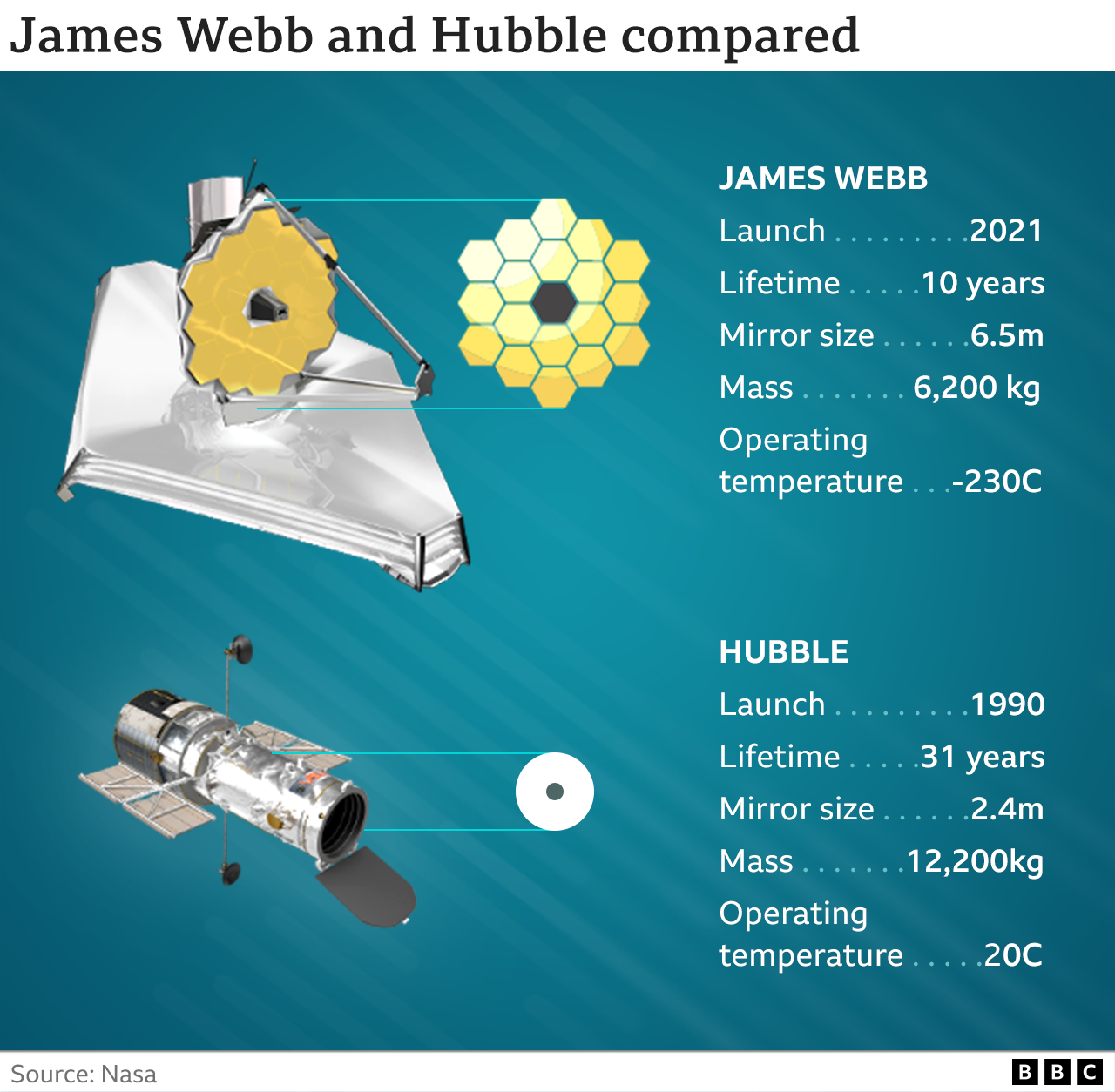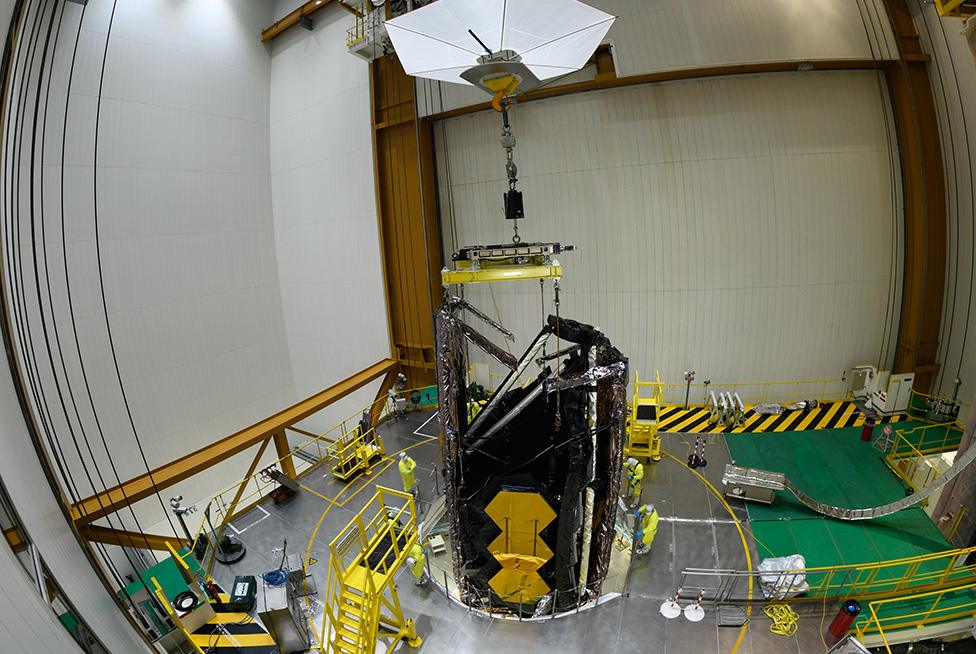James Webb telescope lifted atop its launch rocket
- Published

A "shower curtain" surrounding Webb maintained cleanliness throughout the operation
The James Webb Space Telescope (JWST) has been hoisted atop the rocket that will blast it into orbit.
Weighing more than six tonnes, the $10bn successor to the legendary Hubble observatory was lifted by a crane and edged into position using guide lasers.
Webb is the single most expensive space science experiment ever conceived.
Its huge mirror and super-sensitive instruments will try to spy the first stars to shine in the Universe more than 13.5 billion years ago.
Other work will see it probe the atmospheres of distant planets to look for signs of life.
The pictures on this page are among the last we will see of Webb on Earth.
Lift-off had been scheduled for Wednesday 22 December, but issues related to the electrical interface between Webb and the rocket following mating mean the ascent to space won't now happen before Friday 24 December.
JWST is a US space agency (Nasa) venture, but the task of launching it has been given to the European Space Agency (Esa), which is a partner on the project along with the Canadian Space Agency (CSA).
Esa is using the dependable Ariane-5 for the job. The vehicle operates out of the Kourou spaceport in French Guiana.
Engineers at the spaceport have been preparing the telescope and rocket in parallel and only brought them together into the same building last week.

Webb was lifted by crane to a work platform that stands over the top of the rocket
The crane manoeuvres required to mate the pair required millimetric precision. A "shower curtain" was put around Webb during the work of attachment to keep the observatory and its mirrors super-clean.
Not shown on this page is the next stage - the activity of encapsulation, the placement of Ariane's nosecone, or fairing, over the top of Webb. This activity was scheduled to be completed on Tuesday.
The fairing, which will protect Webb during the first three minutes of its ascent to space, only just fits around the telescope.

Webb, in its folded launch configuration, is a rectangular box measuring 10.6m (35ft) by 4.5m by 4.5m. This leaves a mere 15-20cm gap to the inner surface of the nosecone. And under launch loads, when everything is vibrating, this separation will be reduced still further to as little as 9cm.
Webb will continue to be monitored in the days up to lift-off.
There are access points in the fairing, explains Esa Webb project manager Peter Rummel.
"This means we can purge the inside using very dry, super-clean air. We can also put in sensors to look for any contamination. And of course we switch on the telescope to check everything continues to be OK," he told BBC News.

Webb shown being lowered down on to the rocket - guided by lasers
The Ariane carries a number of modifications for the upcoming flight. In particular, special vents have been put in the sides of the fairing to ensure there is an even loss of pressure during the climb to orbit. This will ensure there is no abrupt change in environment that might damage the telescope when the fairing is discarded.
The rocket will throw Webb on to a path that will take it to an observing station some 1.5 million kilometres from Earth.
This journey should last a month, during which time Webb's 6.5m-diameter primary mirror and tennis court-sized sunshield will be unfolded.
The telescope has been designed to image the earliest objects to form after the Big Bang.
These are theorised to be colossal stars, grouping together in the first galaxies.
"There's speculation that these massive early stars might quickly collapse into black holes," explains Prof Andy Bunker from Oxford University.
"More massive stars will undergo rapid core collapse, which we call a supernova event. We see those as stellar explosions. But there is a sweet spot in terms of stellar mass where the star might collapse directly to a black hole. So-called direct-collapse black holes have been predicted but never seen observationally. Webb may give us the evidence, albeit indirectly."

Artwork: The clamshell-shaped fairing will protect Webb as it climbs to space
You can hear Jonathan talking to key figures on the James Webb mission in a special edition of Discovery on the BBC World Service and on Inside Science on BBC Radio 4.
